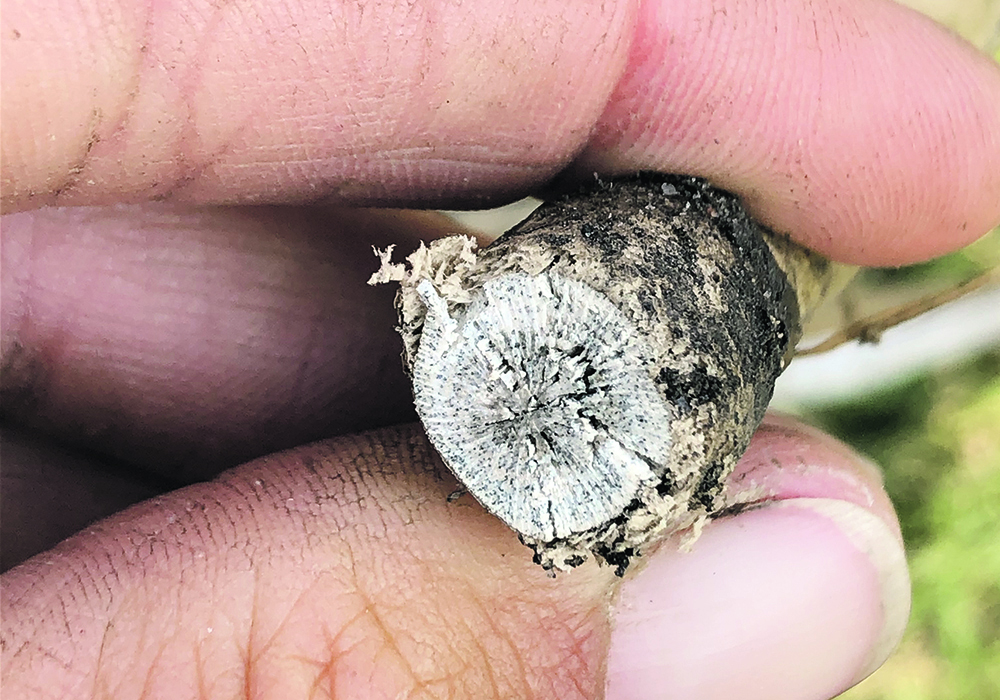Saskatchewan’s plant disease specialist says more canola fields are infected with verticillium stripe.
The first case in the province was confirmed in 2021, but Alireza Akhavan said agriculture staff were surprised when they went looking for it in fields along the Manitoba border in 2022.
“We got shocked because we only looked at 25 fields and 16 of those had verticillium, so 60 percent of those fields in that targeted survey,” he told a SaskCanola seminar. “This year we are going to cover the whole province after harvest and we’ll at least look at 100 fields for verticillium stripe to see what is the risk.”
Read Also

Phosphate prices to remain high
Phosphate prices are expected to remain elevated, according to Mosaic’s president.
The disease was confirmed in Manitoba in 2014 and Akhavan said it seemed likely there was more of it in Saskatchewan than first thought.
Verticillium stripe is confirmed after harvest with a unique stripe along the stem. When the epidermis is peeled back, there is microsclerotia underneath.
“They are very tiny. You will need a magnifier to see them,” Akhavan said.
Symptoms are seldom seen during the growing season and he said for years many thought the disease was rare in Saskatchewan.
Last year, in addition to the general canola disease survey, a group of staff went to the east side of the province near infected Manitoba fields to take a closer look.
Akhavan said cases were found farther from the border and he even got phone calls from the northwest last summer.
“This was the rationale we put together a new protocol this year,” he said.
All the major canola growing regions in the province will be sampled.
Verticillium stripe appears similar to clubroot, particularly in the early days; control depends on rotation and sanitation.
“For verticillium management, at this time there is no registered fungicide and there is no registered resistant cultivar. They’re a work in progress,” said Akhavan.
In the meantime, farmers have to be careful not to spread the microsclerotia, which can live in the soil for up to 15 years.
However, also similar to clubroot, the pathogen declines quickly during the first two years in the soil.
“This is the reason we always recommend two years away from canola because in that two years, the population declines so quickly. The same concept applies to verticillium.
“A two-year break from canola would be very helpful in terms of disease management,” he said.
The impact on yield is not known. Researchers are working on yield-loss models, but Akhavan said studies didn’t start until 2019 and usually take five years.
However, he said European research suggests 10 to 15 percent yield losses, and as high as 50 percent in very severe cases.
During his presentation, Akhavan also updated growers on survey results of other diseases.
Sclerotinia, which is moisture dependent, was found in more than half of the 205 fields surveyed, at 56 percent. The locations aligned with the weather pattern, with the highest prevalence in the northeast and east-central. However, the northwest and southeast had the highest incidence or number of affected plants in each crop.
Blackleg, which will appear even in dry conditions and is a trade irritant with some customers, was found in 73 percent of crops surveyed, although at the lower end of the severity scale. Most blackleg was seen in east-central region.
Less significant diseases were also found, including aster yellow, which were present in 26 percent of fields, and alternaria black spot in 51 percent.
















